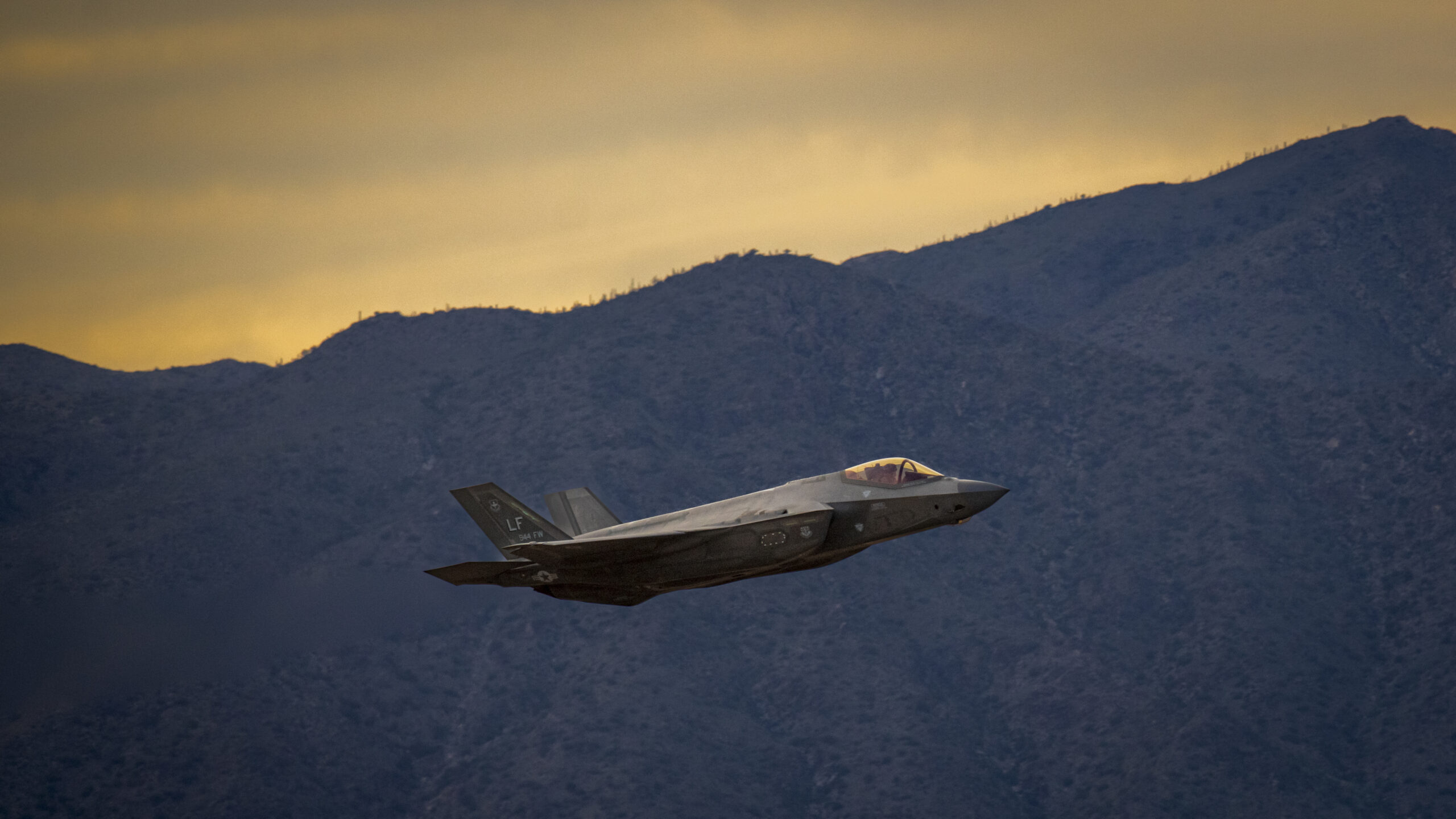
An F-35 Lightning II assigned to the 944th Fighter Wing, takes off from Luke Air Force Base, Arizona, Nov. 15, 2022. The F-35 is the U.S. Air Force’s latest fifth-generation fighter and provides next-generation stealth with enhanced situational awareness. (U.S. Air Force photo by Senior Airman Noah D. Coger)
UPDATED 3/3/23 at 4:29 pm ET to clarify that the cause of the F-35B crash remains under investigation.
WASHINGTON — The Pentagon is carrying out hardware fixes for the F-35 joint strike fighter to correct a vibration issue officials discovered while investigating the cause of the crash of an F-35B in December, a Pratt & Whitney executive said today.
Speaking to reporters during a virtual roundtable following the resumption of engine deliveries for the fighter, Vice President for F135 Programs Jen Latka said officials have developed an “immediate resolution” for the problem and that “for sure we are going to be retrofit[ting] some jets.”
By definition, retrofitting jets means F-35s will have to be grounded while a hardware fix is implemented. How many jets are impacted, how long they will be grounded for repairs, whether the issue impacts foreign-owned jets and how much the fix will cost taxpayers all remain open questions. (That includes, potentially, F-35s owned by Australia, which is showcasing the jet at this week’s Avalon Air Show.)
Also known as “harmonic resonance,” the vibration issue prompted the F-35 Joint Program Office to pause deliveries of new F135 powerplants and ground an unspecified number of the fighters. JPO cleared engine deliveries to resume Feb. 24 after officials determined a fix for the vibration problem, though the root cause of the December mishap is still under investigation. The inquiry into the crash is being led by Naval Air Systems Command.
According to Latka, the fix requires hardware that has now been introduced in production and is in the process of going out to jets in the field. She described it as “a very elegant solution” that does not require “going deep into the core of the engine,” though she deferred questions on specifics to JPO.
“The potential for the harmonic resonance issue occurring was limited to a small number of aircraft,” JPO spokesperson Russ Goemaere said in a statement to Breaking Defense. “The actions the government and industry team are taking will ensure incorporation of mitigation measures that will fully address/resolve this rare phenomenon in impacted F135 engines.”
Asked whether the resonance issue was known to the program prior to the December crash, Latka confirmed that officials previously encountered the problem but that “there are new aspects to what happened in December.”
For example, Latka said the vibration issue manifested after 600,000 flying hours and was a systems issue involving multiple factors.
“We can all say with certainty that it was not a manufacturing or quality issue,” she added.
Latka convened the virtual roundtable in part to announce that Pratt’s favored approach for modernizing the joint strike fighter’s engine, called an engine core upgrade, is supported by the current export authorization framework that governs foreign sales. Pratt is touting the upgrade as the Air Force weighs going with ECU or fielding a new, adaptive engine, where Pratt and General Electric would be expected to compete.
The Air Force’s decision is expected to be announced as part of the Air Force’s fiscal 2024 budget unveiling in early March.






















